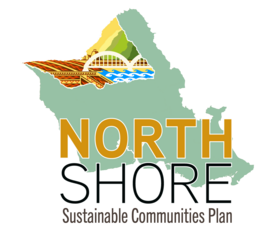Do you agree with the following vision element?
"Preserve and Protect Cultural and Historic Resources"
View the 2011 NSSCP description of this vision element below:
Preserving significant plantation era and other historic features such as at Hale‘iwa Town, Waialua Town, the Waialua Mill, and other sites, as well as protecting Native Hawaiian cultural and archaeological sites, has been important in retaining the area’s unique identity and country character. Historic site restoration and interpretive programs are integrated into the development of parks and shorelines and mountain access systems, to help enhance appreciation of these resources.
The North Shore has a wealth of historic and cultural resources signifying its rich history of land use that extends back to the precontact Native Hawaiian era. Native Hawaiians were the first known inhabitants of the region, arriving around 1100 A.D. and settling in villages built along valley floors, streams and shoreline areas. With an abundance of marine life, fertile soils, natural springs, and forest resources, the lands around Waialua and Kaiaka Bay are believed to have supported between 6,000 to 8,000 people prior to Western contact in the late 1700s. The concentration of archaeological and cultural sites remaining in the region indicates that the moku of Waialua was viewed as an important area to invoke and sustain mana (the spiritual force and energy that was integral to the religious, social and political well-being of the Native Hawaiian society.)
Following the arrival of Western missionaries and the introduction of Western ideals in the early 1800s, there was a drastic reduction in the population of Native Hawaiians and their traditional land use practices. Like other places on O‘ahu, Western entrepreneurs assumed control of large tracts of land for plantation agriculture purposes. With the establishment of the North Shore’s first sugar cane plantation in 1865, plantation agriculture dominated the North Shore’s economy for more than 100 years until the closure of the Waialua Sugar Mill in 1996. Most of the North Shore’s present-day landscape – including the region’s physical layout and formation of its towns and neighborhoods, its building forms and landmarks, sense of place, and demographic composition and social fabric of the community – have been influenced by the plantation and its distinctive lifestyle.
